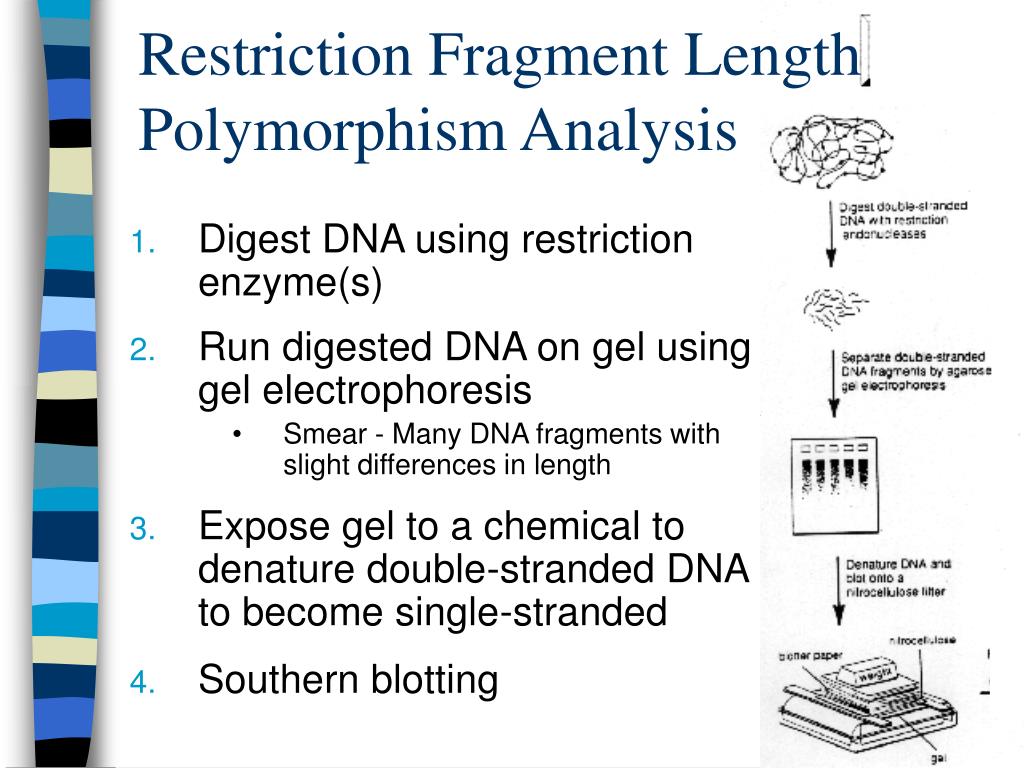
A cleavage map of the SV40 genome.Ī genetic linkage map of the human genome. Nonuniform recombination within the human beta-globin gene cluster. Use of restriction site polymorphisms for prenatal diagnosis of hemoglobinopathies.Ĭonstruction of a genetic linkage map in man using restriction fragment length polymorphisms. Human population genetic studies of five hypervariabile DNA loci. Prenatal Diagnosis of Thalassemia and the Hemoglobinopathies. Origin of the β s globin gene in blacks: The contribution of recurrent mutation and/or gene conversion.ĭNA polymorphism and molecular pathology of the human globin gene clusters.įirst trimester prenatal diagnosis: Chorionic villi sampling. Applications of RFLP technology to parentage testing, human gene mapping, prenatal diagnosis, and evolutionary studies complete the essay. It is shown that the majority of RFLP loci have two alleles, while a subset, the minisatellite and some variable number of tandem repeat (VNTR) loci, exhibit hypervariability.

Simple DNA polymorphisms are illustrated in light of the nomenclature for RFLPs in human gene segments of known function and those that are anonymous. This is followed by a basic description of the RFLP and its components, electrophoresis, the Southern blot, and hybridization. An elementary discussion of restriction enzymes, their nomenclature, recognition sequences, and activities is presented.

A restriction fragment length polymorphism (RFLP) is defined by an enzyme, a restriction endonuclease, that cuts the doublestranded DNA at a particular sequence of bases, a probe, a labeled, complementary segment of DNA that will anneal to a portion of the digested sample, and a set of variable fragment length bands that appear on a Southern blot.


 0 kommentar(er)
0 kommentar(er)
